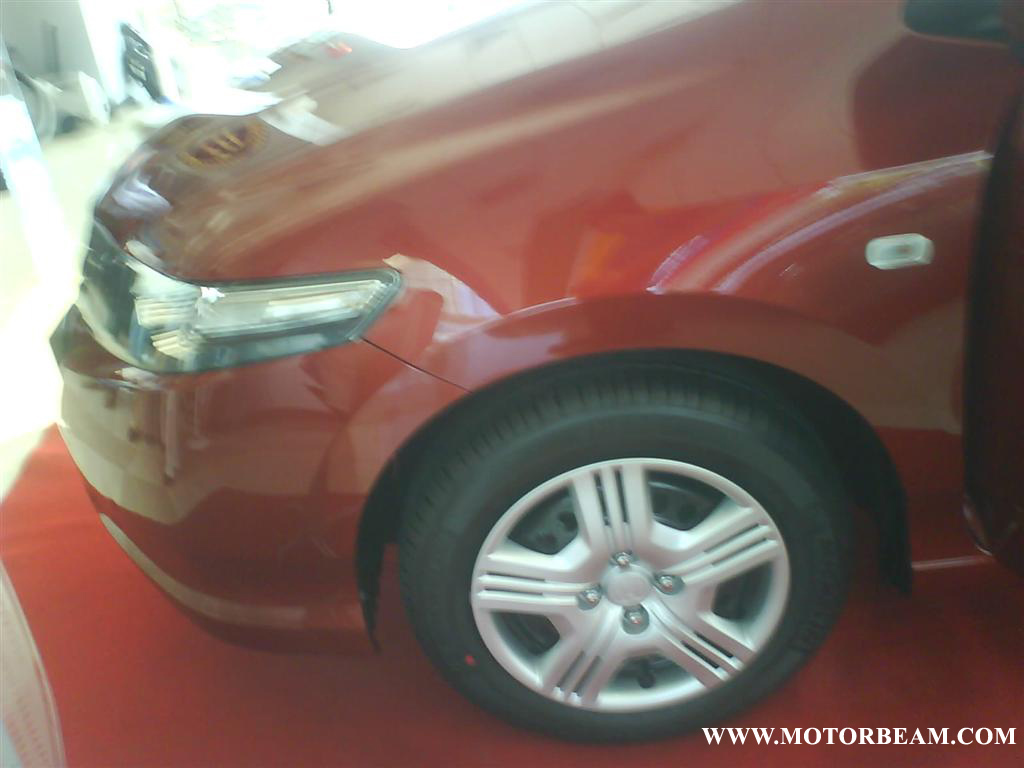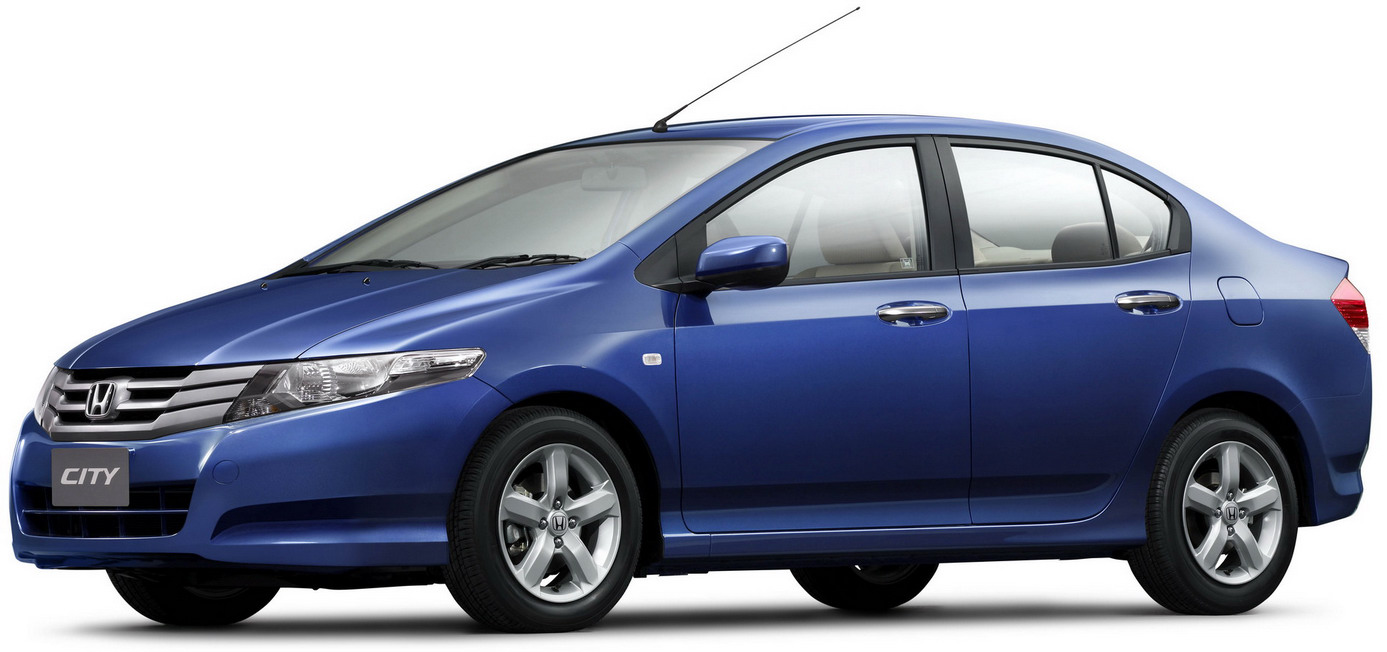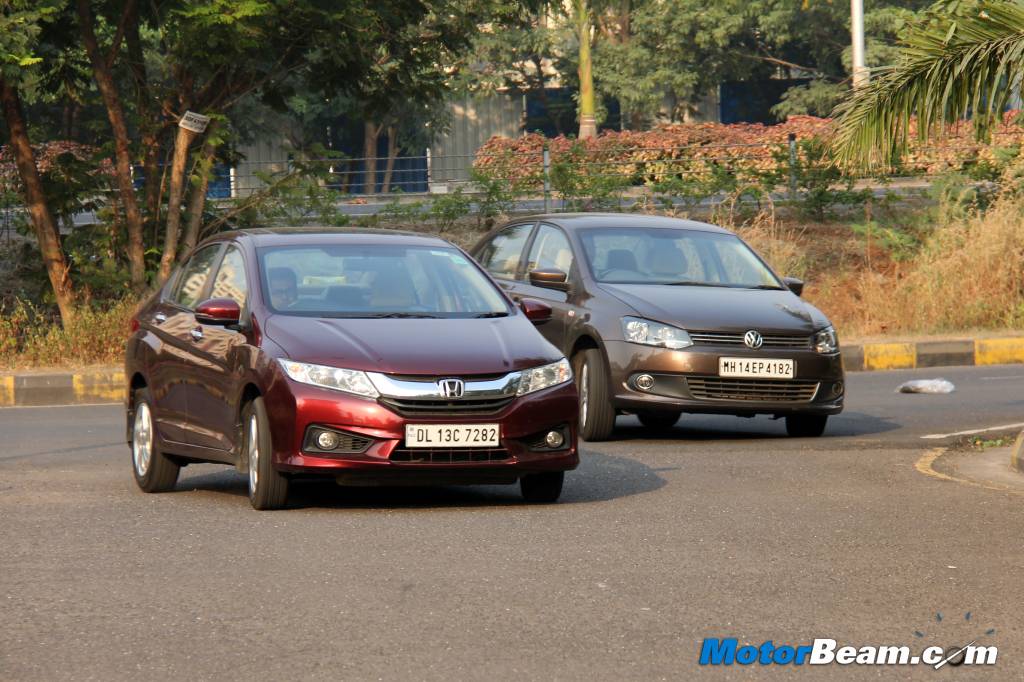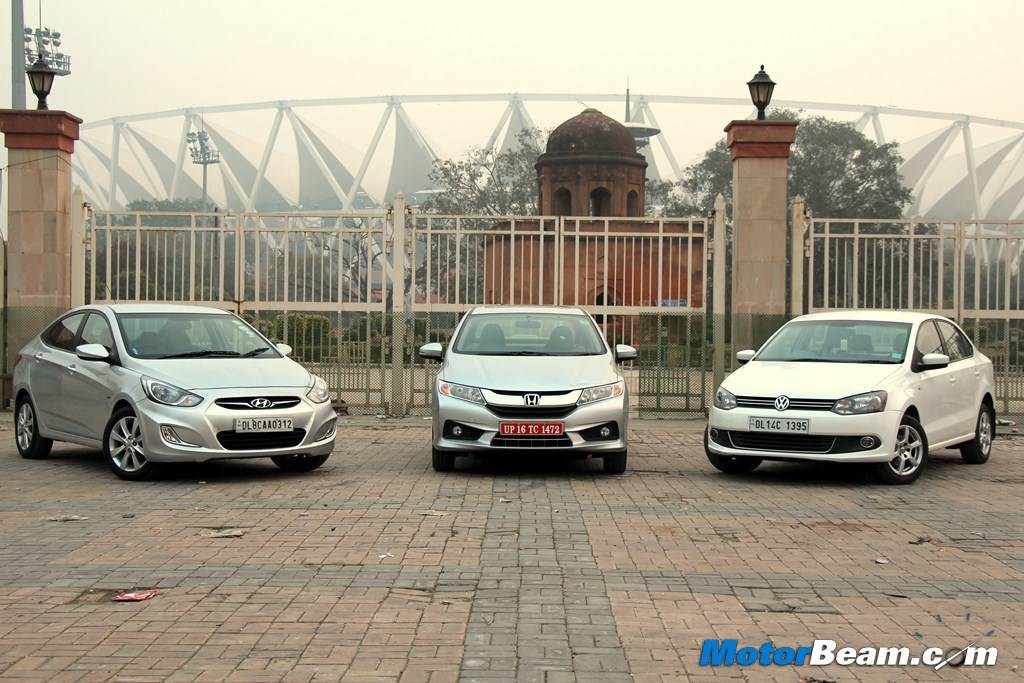
Shootout – Honda City vs Hyundai Verna vs Volkswagen Vento
Price OTR Mumbai: Rs. 8.81 – 13.53 lakhs (Honda City), Rs. 8.74 – 14.19 lakhs (Hyundai Verna), Rs. 8.63 – 12.10 lakhs (Volkswagen Vento)
The fourth generation Honda City is here to steal back its top spot in the segment.
You read this shootout first on MotorBeam. When you think of a sedan, a glimpse of a car comes across your hazy senses. That car is usually the Honda City for most of the Indian audience. Reason being, its reliability, practicality, value, overall character and all the virtues that Honda is known for. Honda has seen success with every model of the City but of late, the C-segment has seen stiff competition with the oil burners like the Hyundai Verna and the Volkswagen Vento leaving the City way behind in the sales charts. Keeping this in mind, Honda has launched the all new City with a diesel heart and a lot more bling, intending to regain its lost glory and to stay ahead of the competition. We taste the main three competitors of this segment and examine who’s the scrumptious of the lot.
Motor Quest: The C-segment is the most fierce battlefield in the Indian car market. The Honda City founded this segment in 1998 and has led it for the most part, only to be derailed by the Volkswagen Vento and Hyundai Verna due to the shift towards diesel cars in the past five years.
The Hyundai Verna is the most attractive of the lot with its fluidic design philosophy
Styling – This is one of the most important departments in this segment, where having a sedan in India means arriving in style. The Volkswagen Vento boasts a polished VW badge up front but beyond that, things are penny plane. The German is sculpted with simple lines running across the body without having any aggressive or sporty panels. The front is derived from the Polo and the rear passes off as a simple and innocent sedan. Some with conservative taste would like the Vento’s styling. Now Honda has also played it conservatively with the new City, retaining the ‘Arrow Shot’ design language. The Japanese carmaker has placed in all new panels though, retaining the same identity of the previous generation.
The rear profile of the Honda City now looks much more aggressive, others are still sleek
The front end of the Honda City gets treated with heavy chrome and angular design but it’s the side profile and the rear, which gets sporty with sharp lines running across the body along with the wide set of tail lamps. Well, it’s the Hyundai Verna that takes the cake here with its bold and beautiful facade. Hyundai’s fluidic architecture makes it look well proportioned as well as visually sound from all angles. The strong crease lines, assembly of lights, curvy roofline and the overall imposing stance come out well with the Hyundai Verna, making it the most attractive car of the trio.
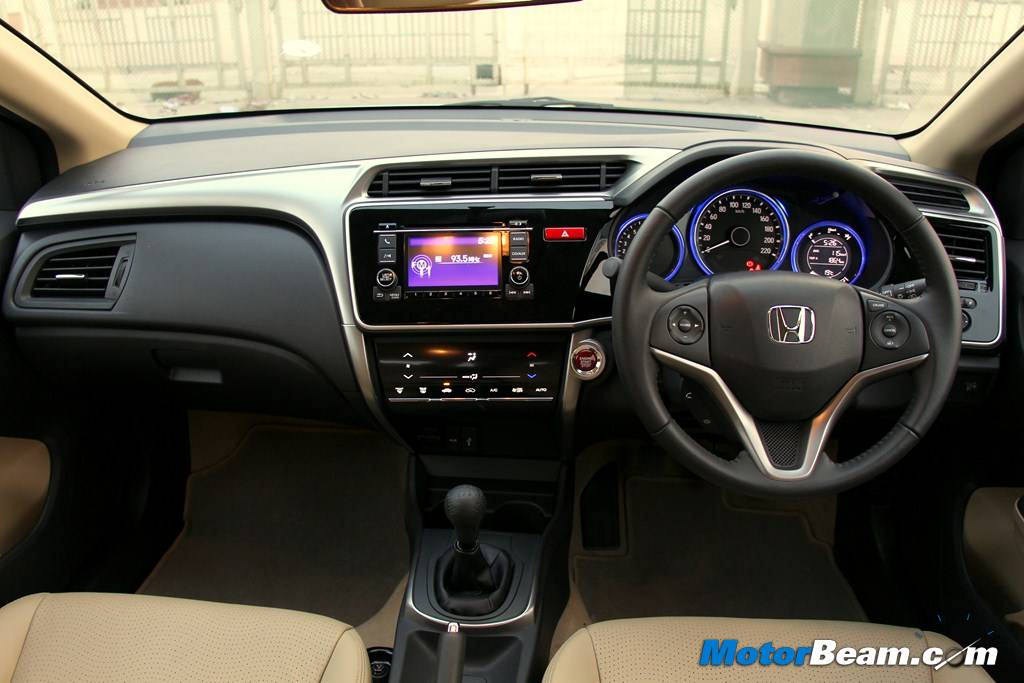
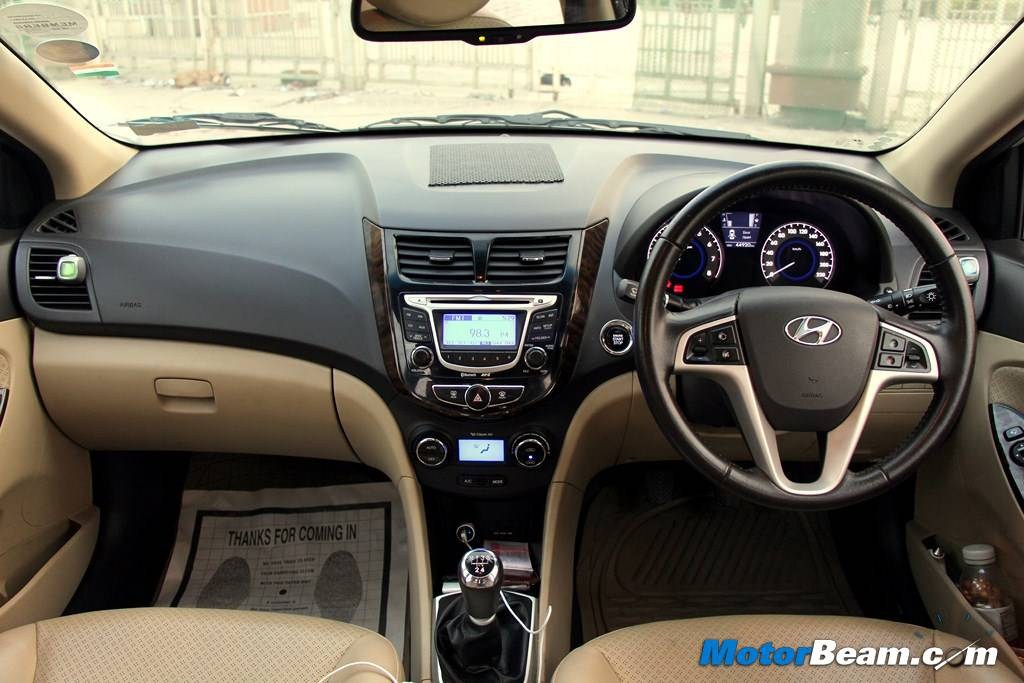
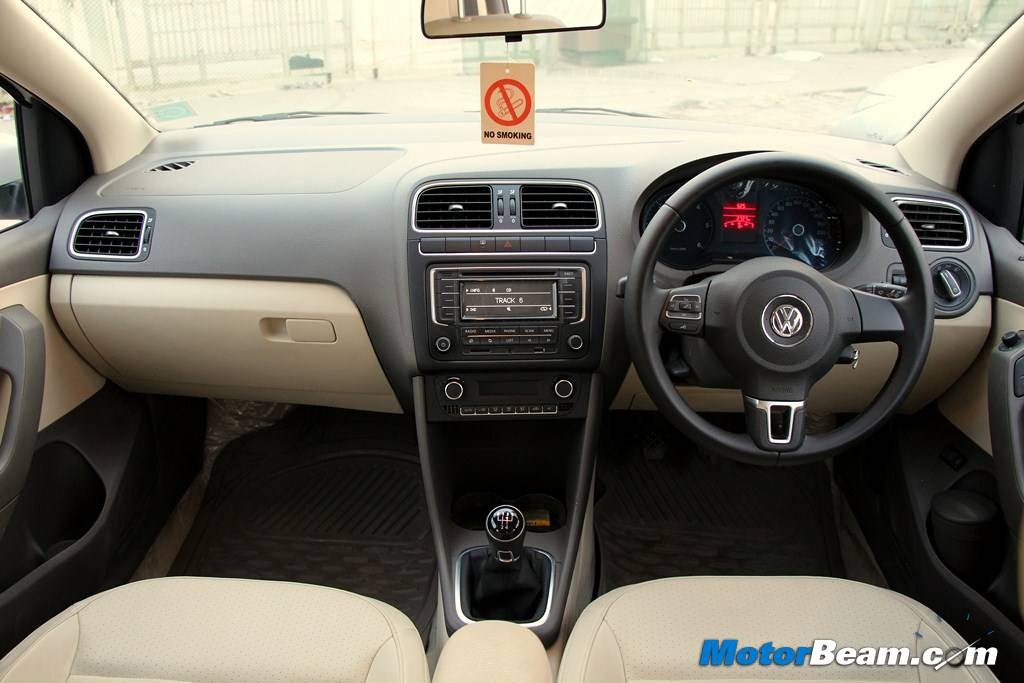
The Honda City gets premium yet advanced interiors while the Verna’s is attractive, the Vento’s is simple
Interiors – Step inside the Volkswagen Vento with your eyes closed and feel the sublime quality inside the cabin, you will be overwhelmed with the level of fit and finish provided in this segment. Now open your eyes and you will feel dejected seeing the unornamented cabin. The simple yet quintessential layout is carried over to the interiors just like the exteriors of the Vento and there are some premium touches of chrome. There is ample storage space for knick knacks inside the cabin but the rear legroom is relatively limited. Third passenger in the middle would feel uneasy due to the high hump. The boot is sizeable for good amount of luggage. The Vento comes with decent but short list of equipment when compared to the Verna and City. Some of the features include ABS, dual airbags, rear AC vents, parking sensors, tilt and telescopic steering wheel, multimedia system with USB, AUX and Bluetooth connectivity, climate control air conditioning, etc.
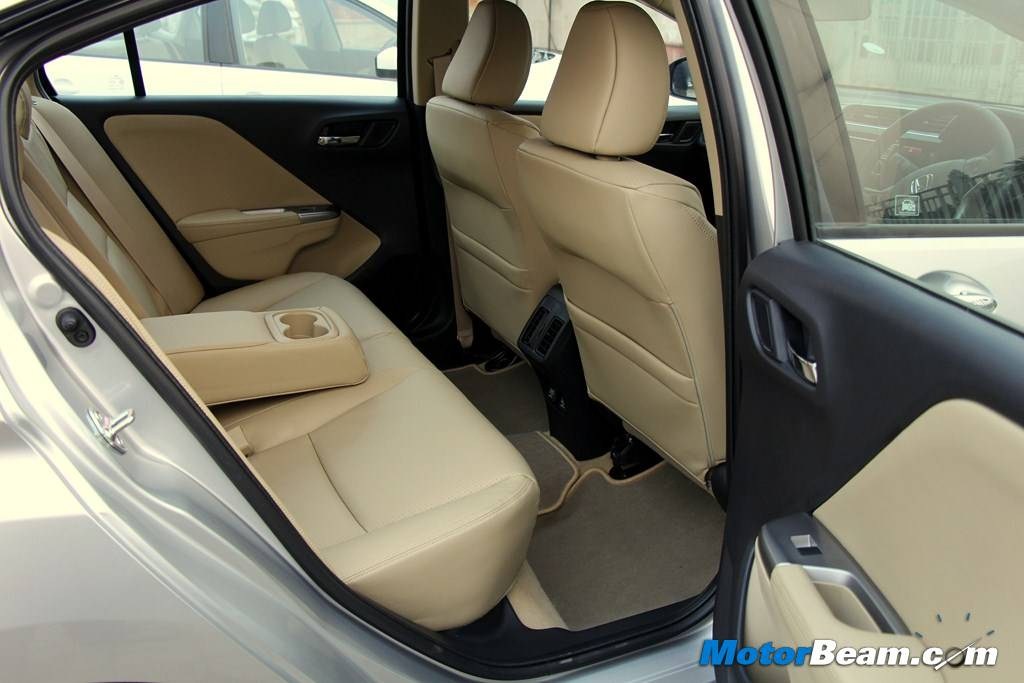
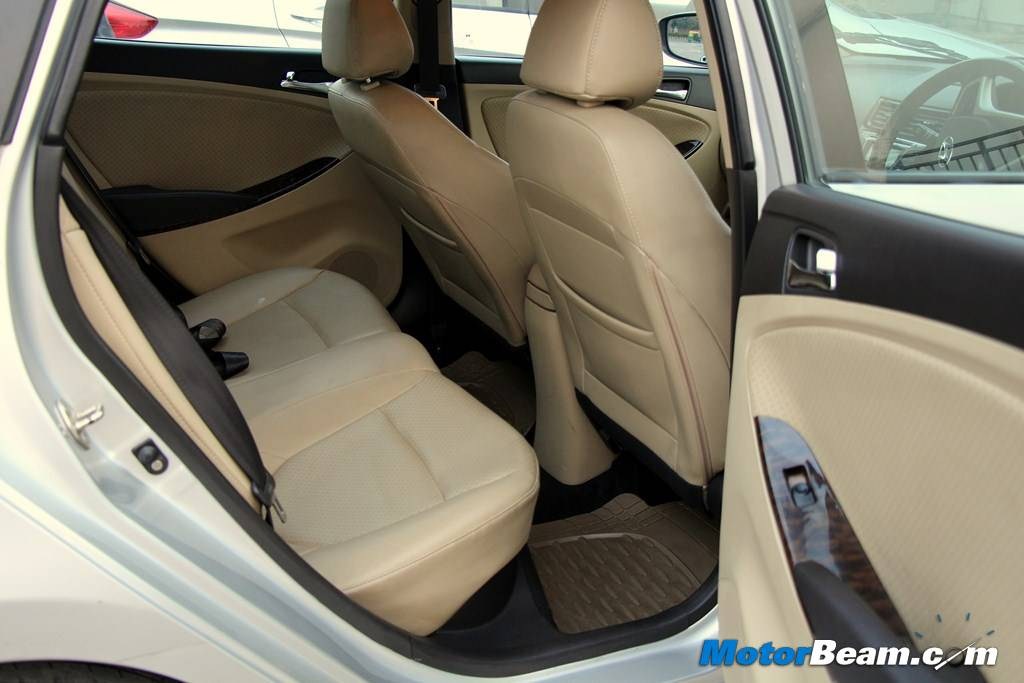
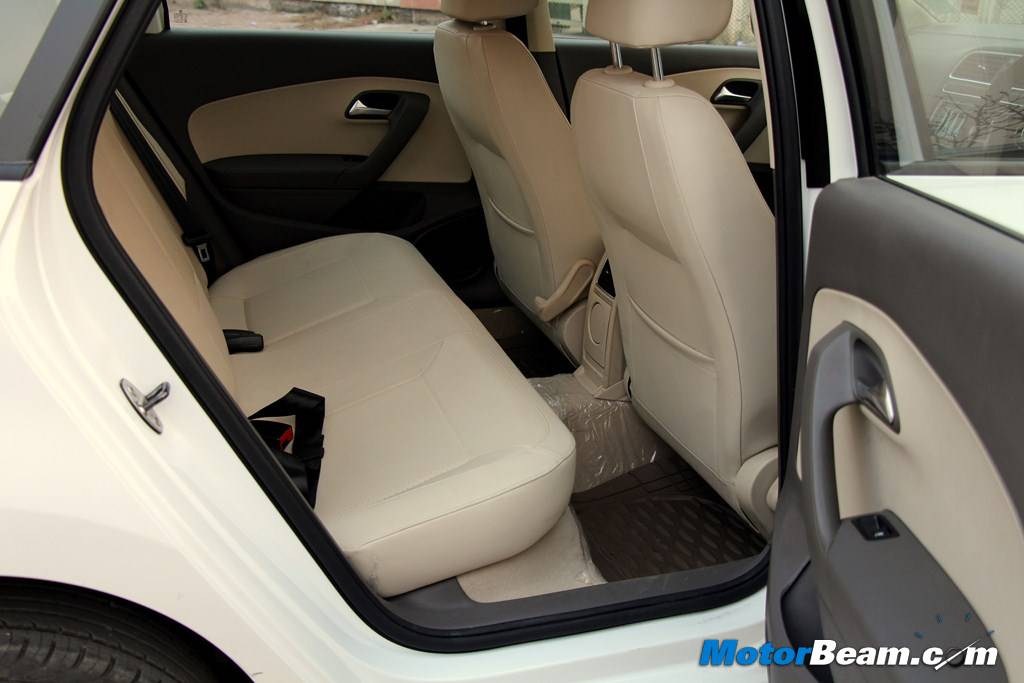
The Honda City has the most spacious and comfortable interiors which easily beats the Vento and Verna
The Hyundai Verna comes with rich interiors and a fluidic layout that resembles the exterior theme. The blue illumination looks cool and you can find some premium chrome touches here as well. Apparently the quality of plastics and the materials used is good but in the long term the dashboard tends to rattle and some squeaks can be heard inside the cabin. The seats are comfortable and supportive but the rear bench positioning is quite low, which makes long drives a bit claustrophobic. The legroom is average and three abreast can sit with comfort for short drives. The boot has enough space to hold a good load of luggage. The Hyundai Verna comes well embellished with features such as ABS, airbags, multimedia with Bluetooth, AUX, USB and CD player, rear parking sensors with camera, automatic climate control, push button start with smart key, etc.
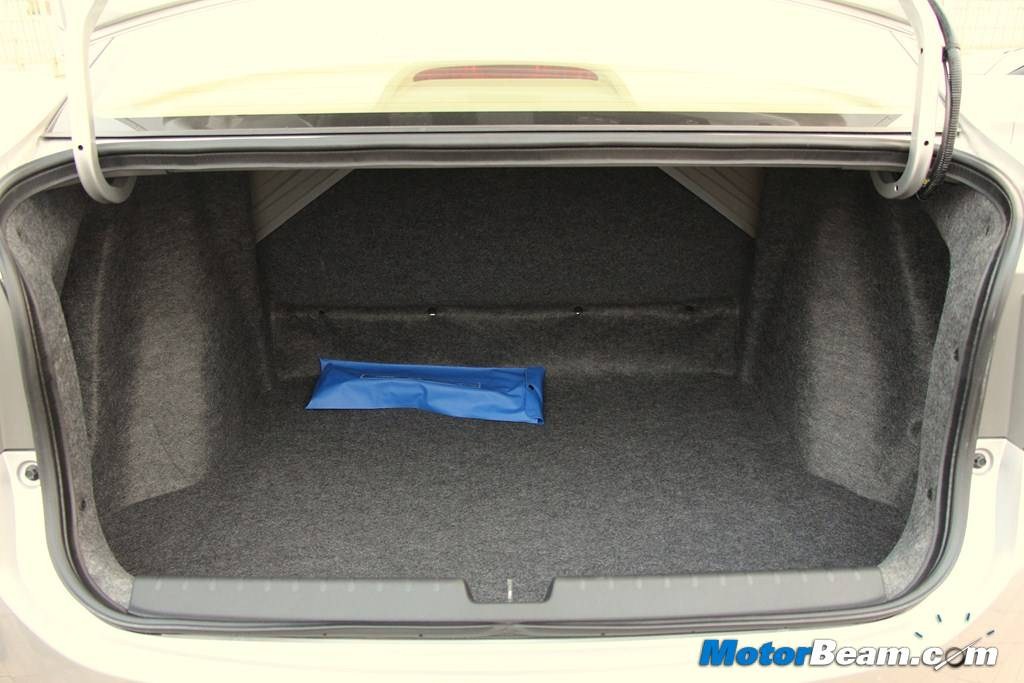
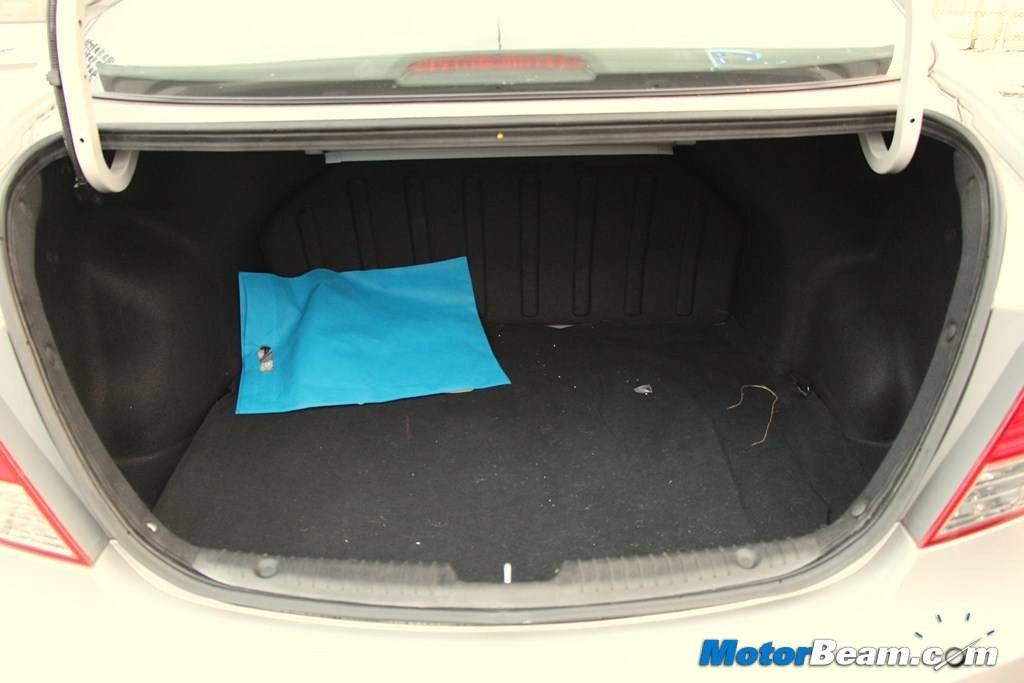
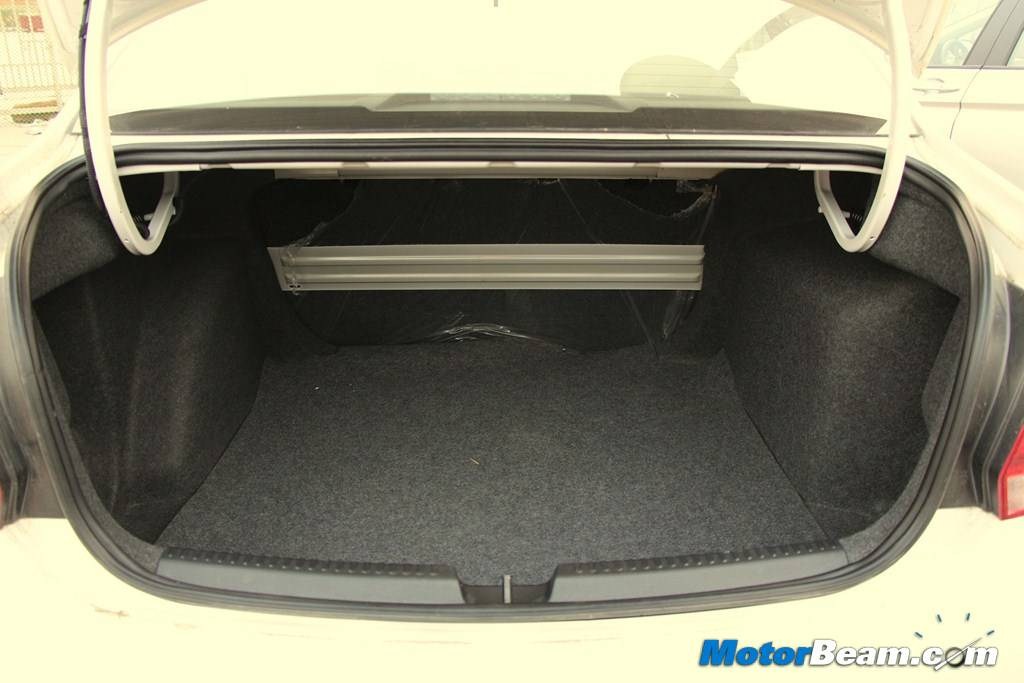
The Honda City offers 510-litres of boot space, while the Hyundai Verna has 465-litres and the VW Vento 454-litres
The new Honda City comes with smart and premium interiors. It has an uncluttered layout that is accentuated with good use of piano black, grey and silver tones. The quality provided is worth appreciation but the German rival scores a few more points here. The City scores high in ergonomics, the dashboard is driver centric, controls fall within reach and the instrument cluster has a user-friendly layout. In terms of space and comfort, the City is a no brainer. The rear has enormous amount of legroom and even when the front seats are pushed all the way back, things are normal behind. The seats are well cushioned and provide good support in addition with twin AC vents for utmost comfort. The boot space has increased slightly compared to the outgoing version. Surprisingly, the new Honda City comes with incalculable list of features that can give the Verna a run for its money. As far as the interiors are concerned, the Honda City simply tops the chart. Some of the features include ABS, airbags, auto AC with touch screen control panel, cruise control, rear AC vents, shark fin antenna, 5-inch multimedia display (CD, Bluetooth, AUX, USB connectivity), rear parking camera with wide, normal and top-down view, push button start with smart key, sunroof and much more!
Honda City comes with the most enjoyable petrol engine with crisp throttle response
Performance – All these three sedans come with petrol and diesel engine options. Let’s begin with the petrol engines first. Honda City! Yes, let’s make it clear at the very beginning that this Japanese comes with a proficient petrol motor. The 1.5-litre i-VTEC needs no introduction as it is carried over from the previous generation City. However, Honda has made changes to this motor for better fuel economy and performance. It produces 119 PS of power with 145 Nm of torque. The throttle response is instantaneous at any point of time and the engine feels power rich for the entire rev range. Redlining the i-VTEC is smooth and puts a smile on your face with its sporty engine note. The 1.5 i-VTEC is even the most fuel efficient of the lot returning 17.8 km/l (manual) and 18 km/l (automatic).
All three cars offer fantastic diesel engines but the Verna’s is the best in performance
The Honda City petrol is best enjoyed with the manual gearbox, CVT is noisy and a bit sluggish. If you are looking for a petrol automatic sedan then the Vento TSI is the best option with a responsive turbocharged petrol engine mated to a quick dual-clutch gearbox. The 1.6-litre petrol mated to 5-speed manual in the Vento isn’t responsive and the gearbox needs to be worked frequently to extract performance. The 1.6-litre petrol in the Verna is quick but the motor feels strained and lacks refinement. The 4-speed automatic in the Verna is sluggish and a disappointment compared to the rivals.
In terms of petrol automatic, the Vento 1.2 TSI is the best car here with the best gearbox
The Hyundai Verna is offered with two diesel engine options – 1.4-litre and 1.6-litre. The 1.4-litre is fuel efficient and offers practical drivability. The 1.6-litre CRDi packs a good punch of power and you enjoy riding on the 260 Nm wave of immense torque. Hyundai has managed superior NVH with this diesel engine. The turbolag is evident until 2000 RPM, post which the Verna is enjoyable. The oil burner provides fast acceleration and overtaking on highways is quite easy. It has an additional sixth gear for highway cruising. For those who are seeking for an automatic diesel in this segment, the Verna is the default winner here, which is the only option available with diesel AT. The Volkswagen Vento gives a tough fight to the Verna in terms of diesel drivability. The 1.6-litre TDI also has considerable turbo lag until 2000 RPM after which there is a strong pull of torque and the car surges ahead with good refinement in the top range. The power delivery isn’t linear as the Verna and the engine needs to be kept on the boil for outright performance.
The 1.5-litre i-DTEC in the Honda City provides linear acceleration from low RPMs
Now, Honda has introduced the City with a diesel engine for the first time in India. It’s the same 1.5-litre i-DTEC that does duty on the Honda Amaze. Compared to its rivals, the diesel has minimal turbolag and it pulls right from the beginning of the rev range. The initial and mid-range is punchy but it’s not a rev happy engine and redlines early. It doesn’t provide the blast of torque as the Verna and Vento, instead, it’s linear and calmer in acceleration. In terms of NVH, the i-DTEC scores lesser than the CRDi and TDI. However, the i-DTEC is the most fuel efficient engine in the country today, returning an ARAI certified 26 km/l. The clutch is light and there is a 6-speed manual provided for comfortable cruising.
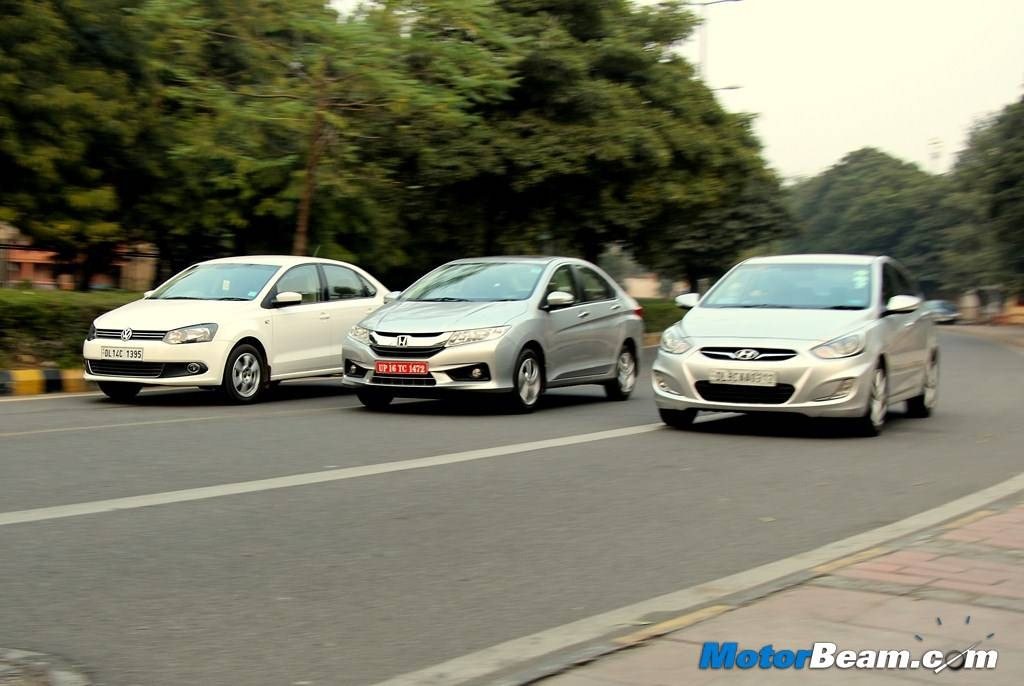
Driving Dynamics – Hyundai needs to work upon this department as the dynamics of the Verna is nowhere near the City and Vento. The Verna has a decent ride at low speeds because it is softly sprung. Once you pick up pace, things get nervous as the suspension is not stable at bad surfaces and the rear tends to bounce a lot, which means highway driving isn’t comfortable. Handling is also on the weaker side. The brakes on the Verna are effective but the feedback could be crispier. None of the three sedans have feedback rich steerings. However, the Vento feels the most confident with its solid stability and precise handling. The suspension does a good job of handling bad tarmac and the Vento only thuds if it hits big potholes. Brakes on the Vento are excellent and it sheds speed quickly.
None of these C-segment sedans have rich steering feedback at high speeds
The Honda City sits in the middle having balanced dynamics. The suspension of the City provides enough confidence to munch miles on the highways but when compared to the Vento, it’s on the lighter side. The ride is pliant and comfortable. Handling is good and the City is quite enjoyable spinning around the twisties but the steering feedback could be better and the OEM tyres provided need to be upgraded for confidence inspiring cornering. Brakes on the Honda City are feedback rich and effective to a certain extent, skinny tyres are to be blamed here.
At the end of the day, the City shines in almost every aspect, emerging on top
Verdict – The Hyundai Verna is feature loaded, the best looker of the lot and also the segment leader. It holds its own in this comparo, though it loses out heavily in the ride and handling department. It cannot catch up with the Volkswagen Vento’s spot on dynamics and strong drivability. The Vento scores high in the dynamics front, competent engine and solid build quality. On the other hand, it loses out on features, styling and space at the rear. However, the Honda City has a better overall package. It is loaded with goodies, frugal engines, convincingly spacious, well balanced dynamics and an overall premium feel. Honda has done their homework extremely well and has done a good job in putting together the all new City. We are quite confident that the Honda City in this new avatar will take the competition head on and will come out victorious, once again!
The Honda City now comes with a desirable package that includes a diesel engine for the first time. The new City is indeed a tough nut to crack amongst the competition because it fares well in almost every department. The Hyundai Verna remains a value for money proposition, whereas the Volkswagen Vento still boasts a strong character of its own. At the end of the day though, the Honda City has our vote.
Further Reading –
Honda City Petrol Review
Honda City Diesel Review
Volkswagen Vento Review
Hyundai Verna Review
Volkswagen Vento vs Ford Fiesta


